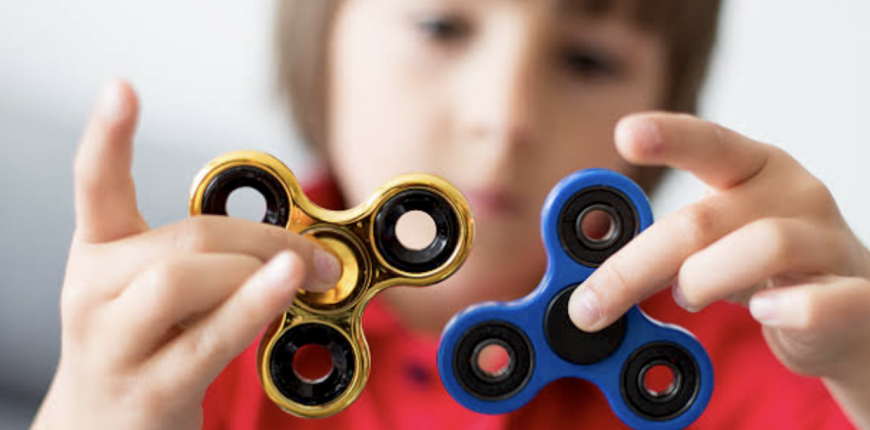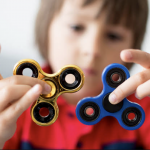A research study just published in January 2020 (see reference below) examined children with ADHD in the classroom to see whether fidget spinners were effective in helping children with ADHD. They investigated the extent to which fidget spinners affect young children with ADHD’s gross motor activity, their behavioral and attentional functioning in the class, and other children in the class. During the initial phase fidget spinners were associated with a decrease in children’s gross motor activity as measured via observed “area” violations as well as objectively via accelerometers. However, no association was found between fidget spinner use and children’s activity levels (measured either via accelerometers or via observed “area” violations) during the final phase of the summer treatment program. On the contrary, children’s use of fidget spinners was associated with poorer attention both during the initial and final phases. Finally, use of fidget spinners did not appear to affect other children in the classroom as these nontarget children committed on average similar number of “area” and “attention” violations regardless of whether there were any target children in the class using fidget spinners.
The theoretical appeal of providing a fidget spinner to a child with attentional difficulties lies in the functional working memory model of ADHD and supporting laboratory studies, which have shown that higher rates of gross motor activity positively predict children with ADHD’s performance on cognitive tasks. The current study showed that simply providing a child with a fidget spinner did not actually result in an increase in gross motor activity, rather it decreased such activity levels. This lack of increase in gross motor activity may not be surprising, given that children only have to use their hands to operate the fidget spinner. It is important to note that a decrease in gross motor activity in the study may be functionally positive, as children in the classroom were less likely to commit “area” violations when using the fidget spinner. Thus, the fidget spinner was effective in reducing children with ADHD’s hyperactivity in the classroom. However, it is important to point out that it was only during the initial phase of treatment (i.e., first week) in which the fidget spinner had a positive impact in terms of reducing children’s hyperactivity. .
Given teacher concerns regarding the extent to which a self-regulation tool and/or “toy” may be a source of classroom distraction, many schools have banned the use of fidget spinners. Counter to this notion, this study is the first to show that having a couple of children in a classroom using such a device for therapeutic purposes does not actually affect the overall behavioral and attentional functioning of the other children in the class. However, the strongest set of findings of the current study shows the fidget spinner’s negative impact on the user’s attentional functioning. Specifically, children committed more than double the number of “attention” violations when using the fidget spinner compared with their baseline functioning. In addition, the negative impact of the fidget spinner on children’s attention did not vary according to the phase of treatment. Thus, despite being in an intensive behavioral treatment for 6 weeks, the fidget spinner still had a negative impact on children’s attentional functioning. Rather than staying on task and paying attention to the teacher during an ELA period, children were more off task and paying more attention to the fidget spinner than the lesson. Despite receiving reprimands from counselors in the class, young children with ADHD’s attention to the fidget spinner speaks to the strong reward sensitivity bias that has been observed among youth with ADHD. Providing a “therapy” tool to a child with ADHD requires the child to not view that tool as a reward. It is apparent that children with ADHD see a fun object that spins on your hands as a fun toy rather than something to help them “focus.” This finding is also consistent with past work showing the lack of effect for other occupational tools such as therapy balls for children with ADHD (Taipalus, Hixson, Kanouse, Wyse, & Fursa, 2017).





